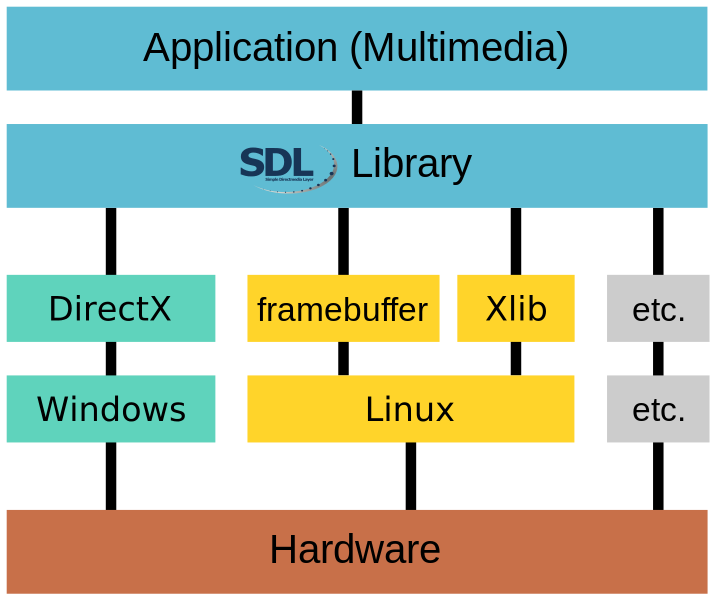The introduction is short.
What is SDL or rather SDL2?
SDL abbreviates Simple Direct Media Layer. In August 2013 the official successor of original SDL (SDL 1.2) has been released, simply called SDL2 (or SDL 2.0). It is a library to develop powerful applications for many different operating systems (platforms) by learning only one set of commands. This is called cross-platform development. The following platforms are officially supported by SDL2:
- Windows
- Mac OS X
- Linux
- iOS
- Android.
Internally the SDL library layer translates your commands to the platform specific commands, which is reflected by the following diagram.

SDL2 Layer Diagram
It’s especially meaningful to use the SDL library if you plan to develop games or need fast paced rendering. Jump and run-, Role-playing-, Real time/turn based strategy-, side-scrolling-, arcade-, board-, card-, simulation-, multi-user dungeon-, puzzle-, shooter-, network games and so on are possible, and any combination of these ;-).
Licensing
The SDL2 library, as well as the Pascal units for using SDL2, are licensed under the zlib license. This license grants a high degree of freedom. So even closed-source, commercial games are possible. As a sidenote, you are free to choose the MPL license for the units, if you like.
How to get SDL2 for Free Pascal or Object Pascal?
There are several SDL2 units out there (see comparison and discussion here) which provide bindings for Pascal to use SDL2, since originally SDL2 has been written in C. Over time it turned out that the PGD community SDL2 units are the best choice to use if you like to get into SDL2 development in Free Pascal or Object Pascal (Delphi). They are updated regularly.
A detailed installation instruction to set your system up for SDL2 development under Pascal is found in Chapter 2 for Windows or Linux. If you did install SDL2 for Free Pascal or Object Pascal already, proceed to Chapter 3. Please choose:
Translation in Ukrainian language avaliable here: https://lazarus-games.blogspot.com/p/1_29.html